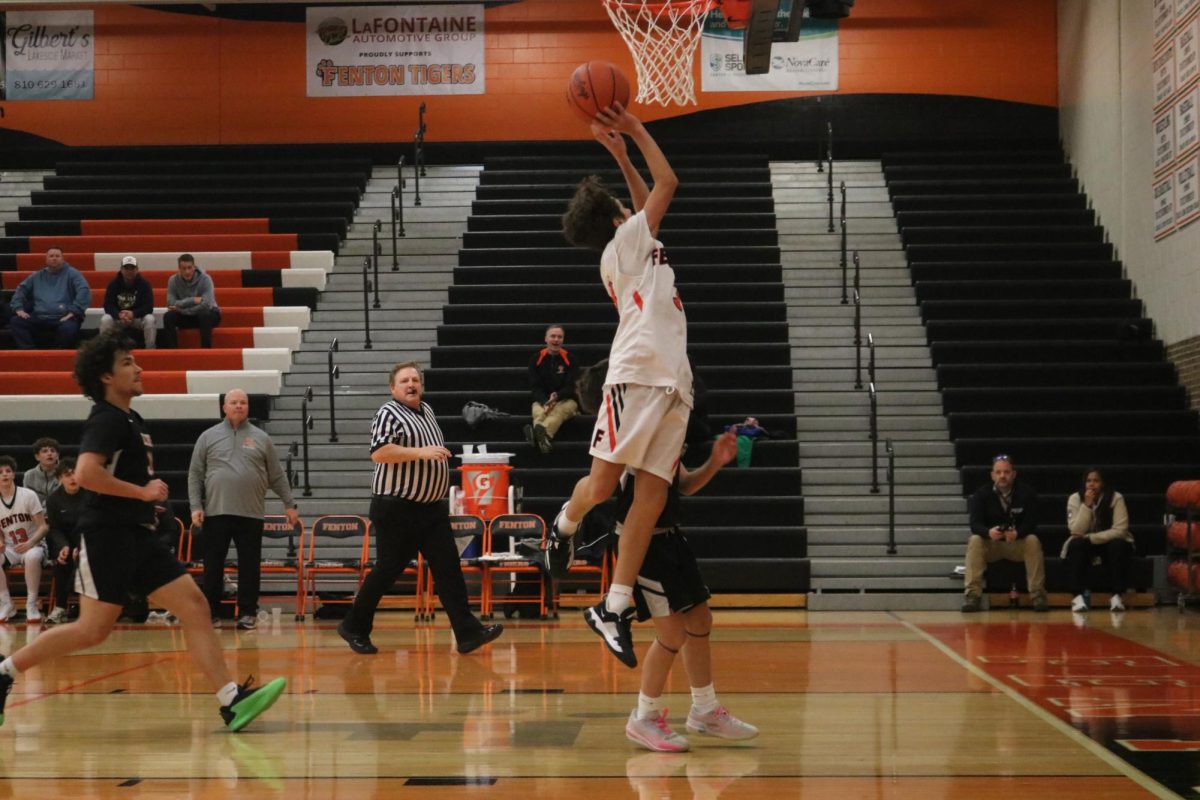Athletic ineligibility, the basics of sportsmanship rules
October 3, 2016
Although academics are the main reason that an athlete gets red lined, it is not the only reason.
“Students can also be red lined for behavioral reasons,” Athletic Director Michael Bakker said. “It is not likely though, normally teachers will just take care of the issue themselves.”
When a red lining takes place, the athlete or player can be out of sports for some time. For an academic red line, as soon as the grade is fixed, the player qualifies to play again. When the player is red lined for behavioral reasons, it depends on how long the teacher feels necessary.
“It depends on the situation, but typically it is week by week,” JV boys basketball coach and Government teacher Nick Gregory said. “If it is because of academic reasons, the student will receive a warning and he or she is only out for that week unless the student athlete does not make the obligation, then that person will be out longer.”
When a student is red lined, it not only affects the player it also affects the team. If a team sport, the red line affects everyone on the team, including the coach.
“From a team standpoint, it can really mess things up. Because taking one student athlete out of the equation can cause some challenges,” Gregory said. “But, the upside to that is that it can give another student athlete the chance to prove that they can be just as good. It still stinks to happen, but it makes other athletes ready to step-up. For a coach you can’t spend your time thinking about what could have happened. You have to prepare for the situation you have.”
While teachers are the ones in control of redlining, it rarely happens and teachers do not enjoy having to red line.
“As a teacher, it is pretty rare, that I have redlined an athlete,” Gregory said. “Normally what I will do is tell the student, I will get in touch with mom and dad, I actually reach out to the coaches whenever possible. So, by the time we go through those three things, the student will have taken care of the problem. Of course we want are students eligible, but our goal is to prepare and make sure that our students can graduate.”
While red lines are a big part of the athletic code it is not the only aspect. Another big part of the athletic code is showing good sportsmanship. Sportsmanship focuses on players playing dirty or trash talking. As a coach, Gregory has to deal with things like this all the time.
“In general, I often tell my students that the referees will catch the person reacting and not the person starting it all,” Gregory said. “When you react, you will get caught. But none of it is ever necessary. I do not want it and it is a distraction. If it ever becomes about you the player or you the coach. It loses sight of what high school sports are really about. It’s just a distraction.”
Another big part of the athletic code are the rules for fans, which involves behavior in the student section. The rules for fans are similar to those of athletes.
“Sometimes the fans need to remember that they are at the event to actually watch the event,” Bakker said. “Any mocking that is done is not necessary and just a distraction from the game. The fans should not do anything insulting or inappropriate. There is just no place for it.”
Administration and coaches believe fans should keep it loud and proud, but at the same time keep it practical.
PHOTO Madi Wheeler








